Abstract
A procedure using polyethylene glycol (PEG), molecular weight 1000, was developed for the isolation of starch granules from wheat endosperm. Immature endosperm tissue was cut repeatedly in 300 millimolar PEG 1000 and filtered through Miracloth. Centrifugation separated a pellet from a supernatant with inhibitory activity. The pellet contained several enzyme activities, including soluble and bound components of starch synthase, starch phosphorylase, and sucrose synthase activities. The starch phosphorylase activity was unaffected by several washings with 300 millimolar PEG 1000 but was lost when the granules were washed once without PEG or washed with sucrose, glycerol, or sorbitol (up to 30%, w/v). The fraction of starch synthase, remaining on the granules after a wash without PEG (the `bound' activity) was not affected by the addition of 30% sorbitol to the wash buffer. This fraction became larger with grain development (0.2-0.7).
To obtain high activity, PEG was required not only during isolation of granules but also in the assay of both starch phosphorylase and starch synthase giving optimum activity at 225 to 255 millimolar. PEG reduced the requirement for glycogen as primer with soluble starch synthase. However, the `bound' starch synthase activity was unaffected by PEG. PEG of different size were compared by their effects in the assay of starch granules: with increase in molecular size, the same effect was obtained at ever lower polymer concentration (w/v) down to a limit.
Treatment of granules with Triton X-100 did not affect their starch synthase activity, but it removed the capacity to incorporate label from UDP [14C]G into non-starch polymers.
It is concluded that PEG, like some other active compounds (ethanol Na3-citrate, and Ficoll) could mediate enzyme-primer interaction by exclusion.
Full text
PDF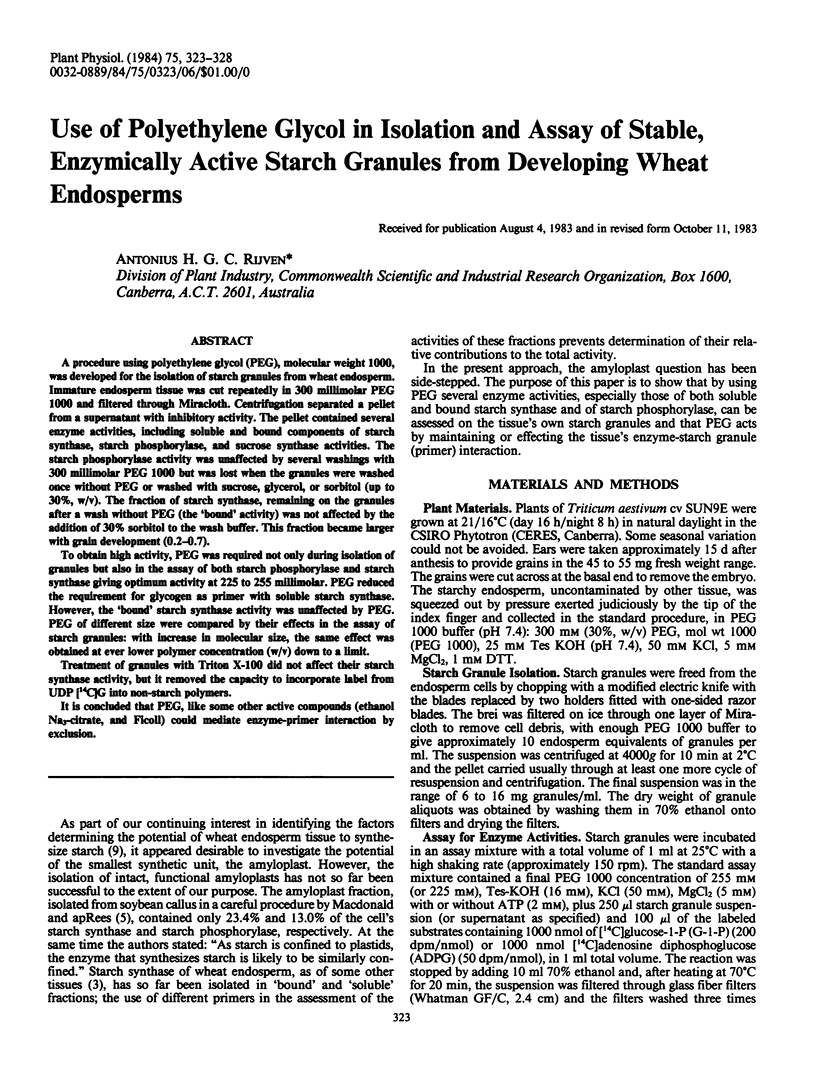
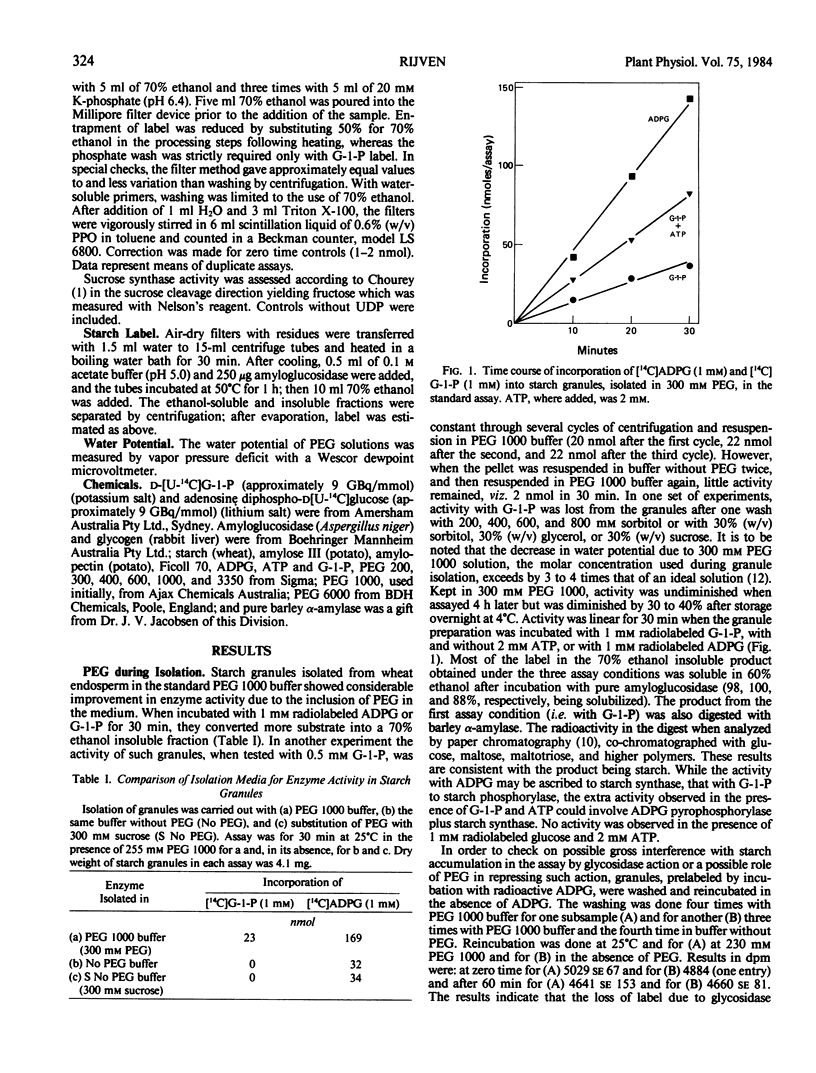
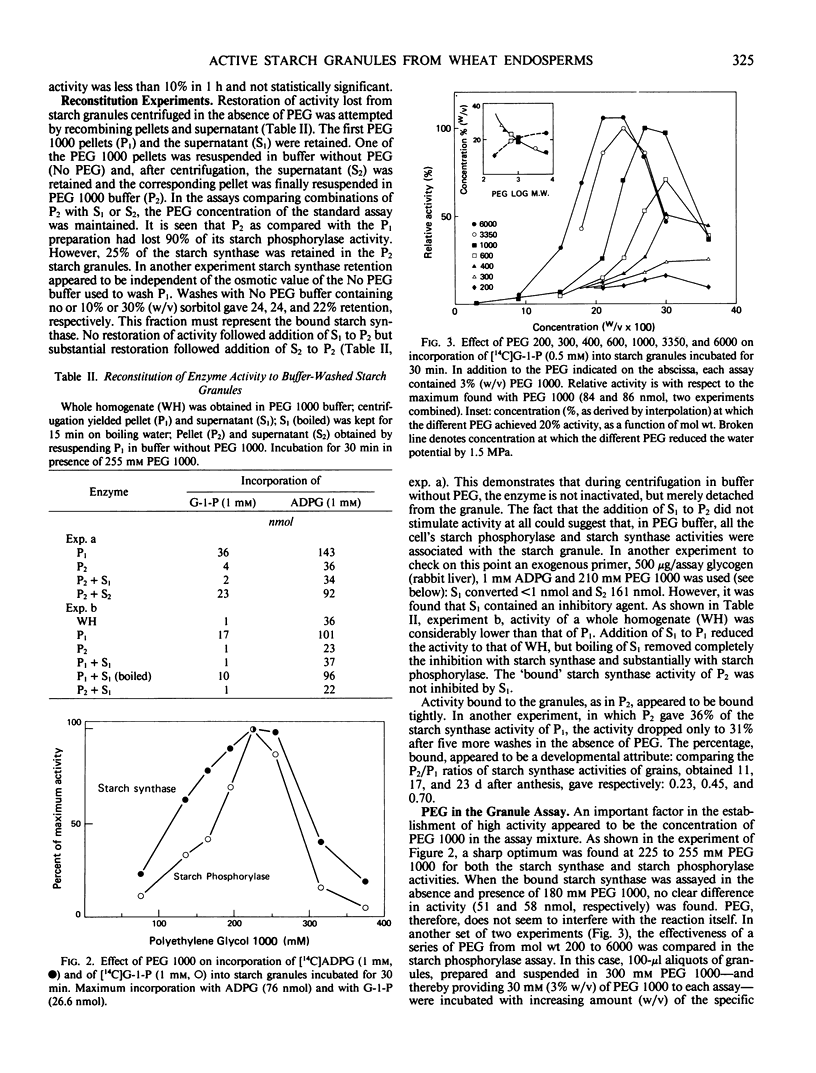
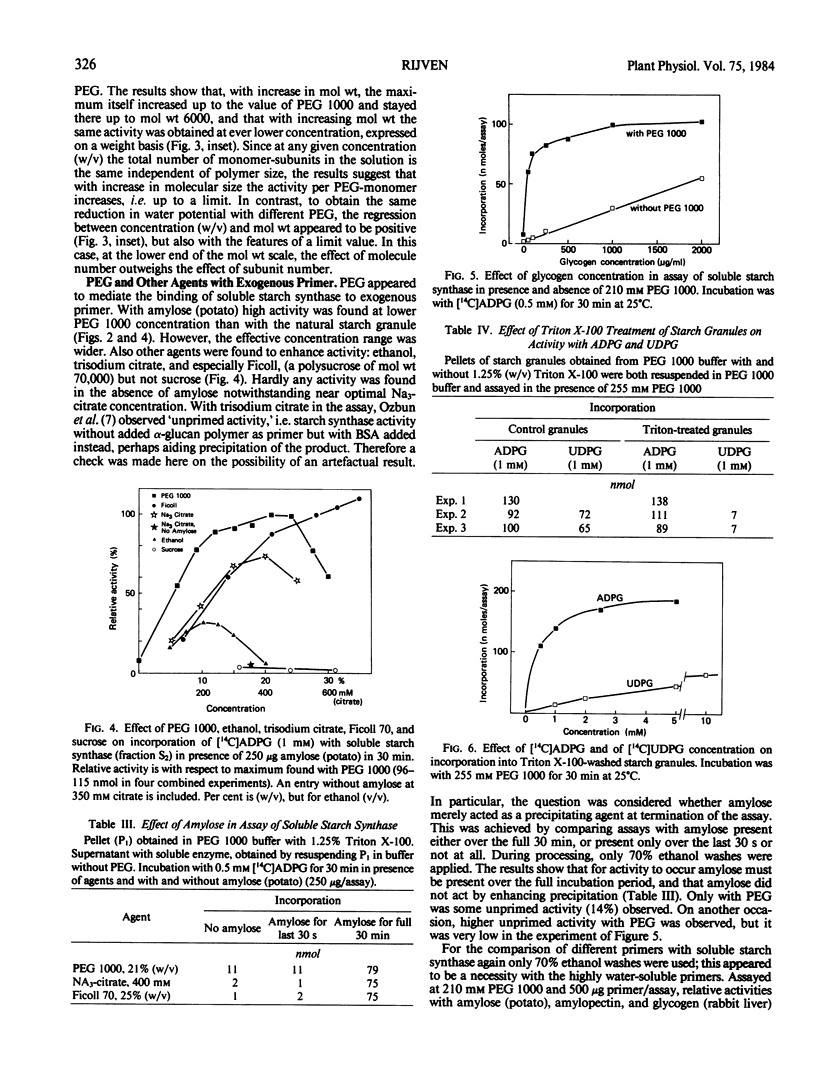
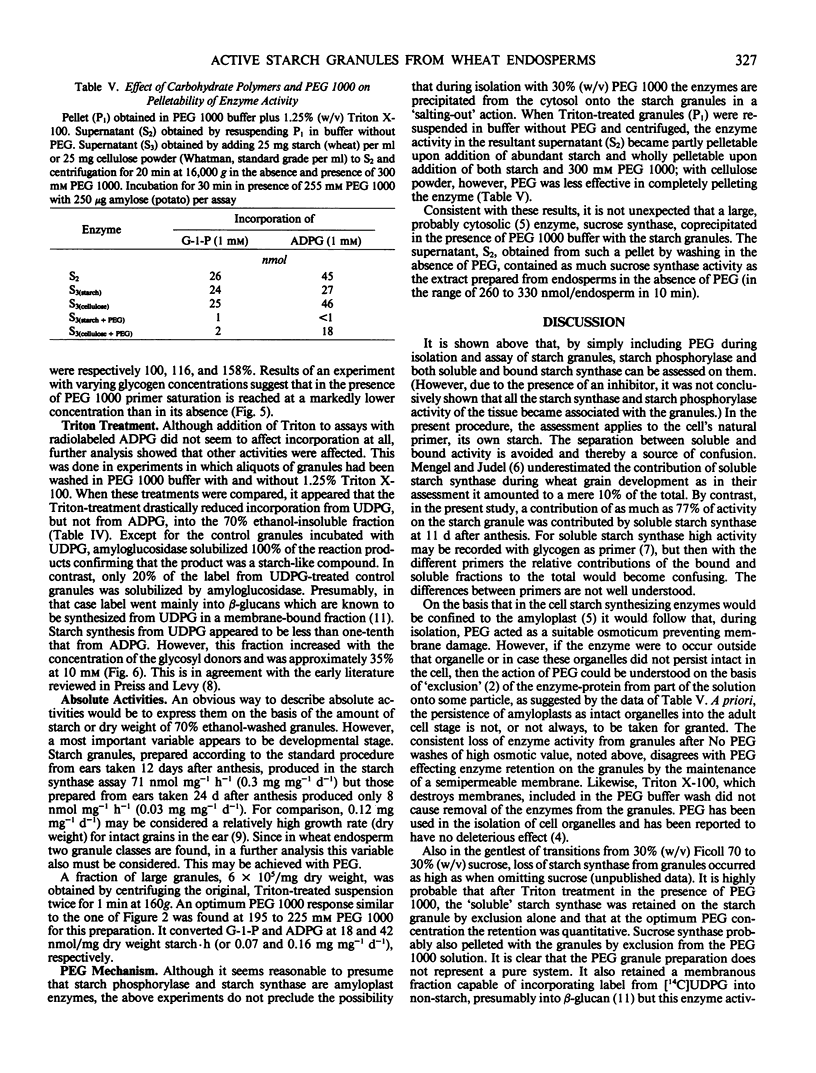
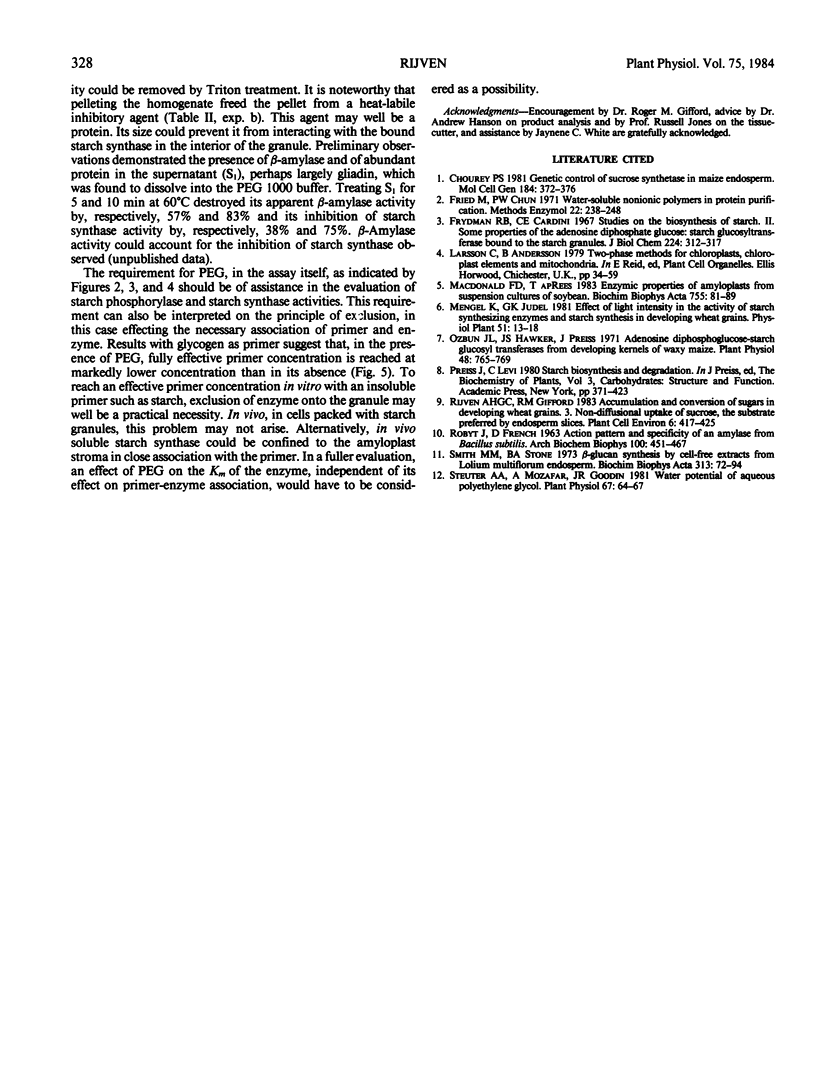
Selected References
These references are in PubMed. This may not be the complete list of references from this article.
- Frydman R. B., Cardini C. E. Studies on the biosynthesis of starch. II. Some properties of the adenosine diphosphate glucose:starch glucosyltransferase bound to the starch granule. J Biol Chem. 1967 Jan 25;242(2):312–317. [PubMed] [Google Scholar]
- Ozbun J. L., Hawker J. S., Preiss J. Adenosine diphosphoglucose-starch glucosyltransferases from developing kernels of waxy maize. Plant Physiol. 1971 Dec;48(6):765–769. doi: 10.1104/pp.48.6.765. [DOI] [PMC free article] [PubMed] [Google Scholar]
- Smith M. M., Stone B. A. Beta-glucan synthesis by cell-free extracts from Lolium multiflorum endosperm. Biochim Biophys Acta. 1973 Jun 20;313(1):72–94. doi: 10.1016/0304-4165(73)90189-x. [DOI] [PubMed] [Google Scholar]


